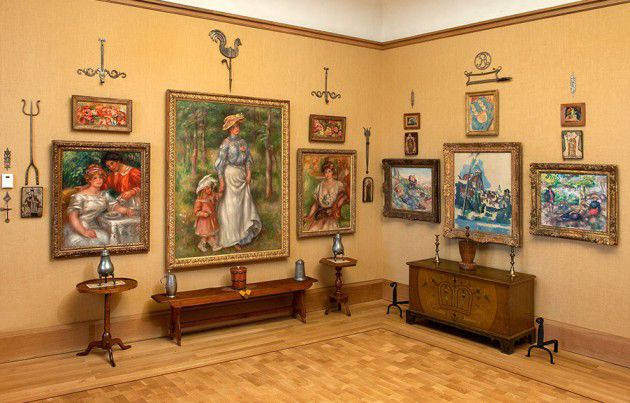Seeing value and truth through works of art
March 21, 2017
Have you ever stood in front of artwork, puzzled by what it could possibly be, unsure of how the person beside you can so confidently interpret its apparently profound meaning? Maybe you watched a movie recently, like “La La Land,” and found great meaning to interpret or did not care for it at all, disinterested by any meaning it did not present explicitly. Maybe you were somewhere in between, finding yourself liking the movie overall but unsure of what certain scenes meant.
In these moments, one may wonder whether art always offers something to be interpreted. Did the artist create this with a discernable message? Or are all interpretations unfounded, subjective and neither right nor wrong?
If we assume the purpose of art is to represent and convey something—a truth, an emotion or a vision—and that all artists create with the intent to convey, then clear communicability of that something is a large part of whether the art can be considered “good” or “bad.” The other criterion is the profundity and resonance of what is being communicated. Arguably, these are what separate “good artists” from “bad artists.” It may also be that this lack of clarity is what makes art simply misunderstood rather than bad, perhaps lacking more in execution through a particular artistic medium than in meaning.
Beyond the execution of the intended meaning, what is it about the person who can access meaning more abundantly and comprehensively, like a powerful magnet, compared to the person who cannot make heads or tails of some work of art? Do they have some special skill or perspective that grants them this insight?
This once again raises the question of whether there is an intended meaning to be discerned in the art, or if the art is a spark for the countless possibility of conclusions that can be reached by its many beholders. If there is an intended, true meaning behind the art, how often is it found? It is inevitable that someone’s interpretation will deviate from the intended one. But, who is to say the intended meaning is the truest one – that the artist herself or himself is the arbiter of the artwork’s meaning? Does the person who created the art hold ultimate authority over its truth, or does the person whose interpretation is most popular offer a more compelling truth? What about the individual who can offer the most robust interpretation, seeing layers of the artwork that one can argue do or do not truly exist? This begs the question of whether we accurately discern the “true” meaning of an artwork or we prescribe our own meaning to it.
Is a work of art a message to be interpreted, a prompt to question something and answer it for ourselves, or a mirror in disguise that confronts us with our own philosophical predispositions? Maybe the meaning we interpret says much more about us than the artwork itself. Further, the kinds of art to which we find ourselves drawn may, to a certain extent, speak to who we are and the kinds of places our minds are.
My past visit to the Barnes Foundation made me wonder this for the first time, as I wandered around looking at the paintings exhibited on the walls but also observing my friends, classmates and professor. I could not help but notice that preferences quickly emerged, as individuals gravitated toward the same kinds of artistic pieces—some liked landscapes, others liked historic portraits or religiously-themed images, several liked warm color schemes, a few liked cool colors, some paused longer at artwork depicting dark scenes while others did not even seem to notice them.
It may be that there are infinitely layered truths to be interpreted in a work of art whether the artist intended there to be or not. And aside from skilled execution, maybe it is precisely this potential for infinite, perceivable truths that renders art “good.” We know that unlike an exam, there is not just one answer or interpretation that can be considered correct. However, we also understand that certain interpretations are more complex and layered, more compelling than others. Like a multi-layered cake, a good piece of art offers a profound depth, dimension and capacity for truth. It is, of course, impossible for one painting to have so much capacity for truth that any interpretation can be considered correct – and this is where the intended meaning weighs in. However, the good artist is not necessarily the best philosopher, the best interpreter of the art’s meaning. The good artist is the one who creates art profoundly capable of evoking truths – as simple or complex as the viewer perceives – that even the artist cannot necessarily account for. The good viewer, or beholder, is the one who on good faith acknowledges the art’s potential for meaning, even the meaning that is beyond immediate grasp. The good beholder attempts to see value in the artwork beyond the paint strokes.







